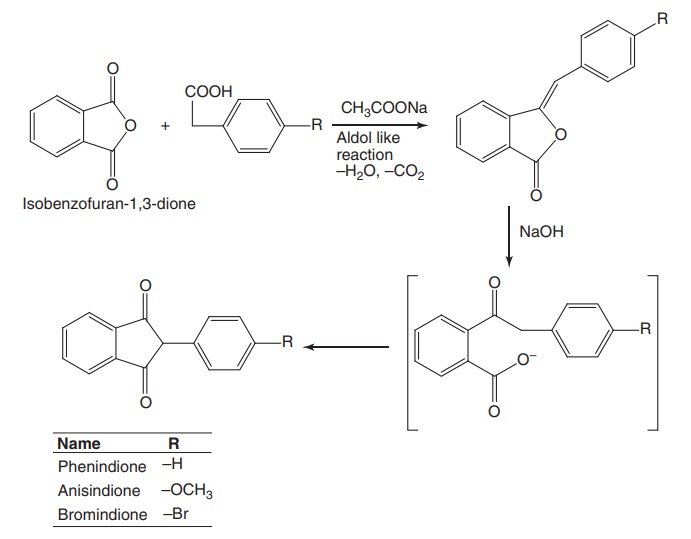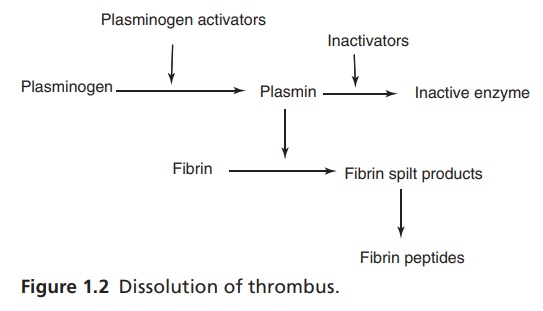Indanedione derivatives-General method of preparation
| Home | | Medicinal Chemistry |Chapter: Medicinal Chemistry : Coagulants
i. Phenindione ii. Thrombolytics (Fibrinolytics) a. Streptokinase b. Urokinase c. Anistrepalse d. Aspirin
SYNTHESIS AND DRUG PROFILE
Indanedione derivatives—General method of
preparation
Synthesis of Phenindione, Anisindione, and
Bromindione

These
1,3-indandiones have been recognized for their anticoagulant activity.
i. Phenindione
Properties and uses: Phenindione exists as white crystalline powder,
very slightly soluble in water, slightly soluble in ethanol and ether. Used as
oral anticoagulant.
Assay: To the sample, add ethanol and warm it, cool to room temperature,
add 10% v/v solution of bromine in ethanol, and allow standing with occasional
shaking. Add 2-naphthol and shake until the colour of the bromine is
discharged. Add water, and dilute potassium iodide solution and titrate the
liberated iodine against 0.1 M sodium thiosulphate using starch mucilage as
indicator.
Dosage forms: Phenindione tablets I.P., B.P.
ii. Thrombolytics (Fibrinolytics)
Fibrinolytics
are drugs used to lyse thrombi and to recanalize occluded blood vessels mainly
coronary artery. Anticoagulants are designed to prevent thrombus formation. A
proteolytic enzyme, known as plasmin, which is released by its precursor
protein plasminogen causes the destruction or dissolution of a thrombus.
Plasminogen activators (e.g. streptokinase, urokinase) bring about this
conversion (Fig. 1.2).

Certain
other compounds have been found to promote the synthesis of various plasminogen
activators. For example, anabolic steroids, act indirectly as fibrinolytic
agents. All these agents are useful in the treatment of pulmonary embolic and
acute coronary thrombosis. Streptokinase and urokinase are commonly used
fibrinolytic agents in the treatment of acute thromboembolic diseases.
a. Streptokinase
Streptokinase
is obtained from group-C beta haemolytic Streptococci.
It is inactive; therefore, to be active it must be converted to
plasminogen, which causes proteolysis of plasmin. It is typically used in
myocardial infarctions and arterial thrombosis.
b. Urokinase
It is
isolated from the human urine, now prepared from the cultures of human renal
cells. It is nonantigenic and is a glycosylate serine protease containing 41
amino acid residues. It is a substrate for plasminogen, which is activated to
plasmin.
c. Anistrepalse
It is a
streptokinase–plasminogen complex in which plasminogen is isolated and acts as
a slow released form of plasminogen activator. Coupling of the
streptokinase–plasminogen complex to p-amidinophenylp-anisate blocks the catalytic centre of
the complex, but allows it to bind to fibrin. As the anisoyl group is slowly
hydrolyzed in vivo, the complex is allowed to bind to fibrin prior to
activation. It is used in the management of acute myocardial infarction.
d. Aspirin
Synthesis
and drug profile is discussed in sec I, NSAIDs.
Related Topics
